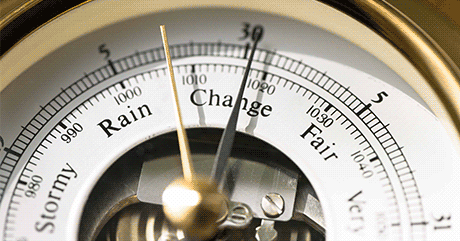Is Your EMS Agency Experiencing Payer Mix Shuffle?
It’s happening now…
There’s no doubt healthcare in America is being changed daily. The Affordable Care Act (of you may refer to it as “Obamacare”) is changing the face of the healthcare and the health insurance landscape in America.
How is all of this affecting your EMS agency?
Payer Mix
Quickly let’s review what a Payer Mix is before we can attempt to explain the shuffle.
 Your EMS agency’s Payer Mix is the percentage of claims that result from ambulance runs when billed to different main insurance payer groups. Typically the major buckets in a payer mix are Medicare, Medicaid, Commercial Insurance, Patient Pay and in some cases Facility Contract.
Your EMS agency’s Payer Mix is the percentage of claims that result from ambulance runs when billed to different main insurance payer groups. Typically the major buckets in a payer mix are Medicare, Medicaid, Commercial Insurance, Patient Pay and in some cases Facility Contract.
The Payer Mix is then calculated as a percentage for each major category and can be tracked in two ways, by the type of trip at the point of initial billing or it can be defined as a percentage of incoming payments.
An example, ABC Ambulance Service has the following payer mix…
| Medicare |
50%
|
| Medicaid |
15%
|
| Commercial Insurance |
25%
|
| Facility Contract |
5%
|
| Patient Pay |
5%
|
Your billing office should be able to provide reports for you to review the big picture of the numbers of accounts or the flow of incoming dollars from which you can easily calculate the percentage breakdown of each category. Some EMS agencies also break down those categories into sub-categories tracking the percentage of major individual payer sources, such as carving out the percentage of Medicare Advantage or Medicaid Managed Care even breaking out major commercial insurance payers, too.
The Shuffle
Most recently, the arrival and resulting effect of the ACA has caused many EMS agencies to notice some considerable shift from what has heretofore been a relatively consistent Payer Mix. Most notably has been a shift from the Commercial Insurance types to Medicaid/Medical Assistance and in some cases from the Patient Pay to other types.
The Federal Government recently reported that as many as 3 million people were added to the Medicaid roles in a six-month period ending in April of this year.
A large majority of those persons were most likely uninsured before joining the Medicaid roles; however the healthcare industry as a whole has seen a drop in patients holding a traditional Commercial Insurance policy for such reasons as loss of employment or people working as under-employed individuals without the benefit of an employer-sponsored health insurance option.
So, when your EMS agency’s administrators are looking at the billing program and the resulting flow of incoming reimbursement dollars, what they are finding in many cases is the percentage of commercially-insured patients has declined while patients with Medicaid coverage are increasing in numbers.
As such, depending on the geographic coverage area your EMS agency operates within, there could be a shift from Patient Pay to Medicaid, as well. In a graying community there may be a shift from other insurance buckets to a swelling Medicare percentage.
How does this affect us?
The shift will long have ramifications for an already economically-challenged American EMS system.
Consider the scenarios we outlined above.
In the shuffle from Commercial Insurance to Medicaid, once-insured patients whose healthcare coverage paid a good portion, if not all of your EMS agency’s bill for service now finds that same patient having coverage, but the resulting payment to your agency is, in most cases, considerably less dollars.
Believe it or not, there are pockets of States where the Medicaid payment barely hits the $100 mark and many Medicaid fee schedules in many States do not include a payment for mileage, only the base rate payment.
Knowing what most EMS agencies’ average cost-per-run equates to, most likely your agency is poised to take a loss when responding to, treating and transporting these patients.
On the other hand, the glass-half-full people out there can counter argue that there are x-number of patients who had no healthcare coverage previously who at least are now on the Medicaid roles where at least some money will be paid. That’s true, but we still cannot lose sight of the fact that the dollars resulting from the billing of these patients is considerably less than our costs to provide the service. Plus, persons with newly enrolled coverage may also begin using our services more frequently which will drive up your agency’s call volume causing additional cost that is now under-funded due to the lesser payment scenario.
We have blogged previously about increased annual deductible amounts being added to many commercial insurance policies (average individual increase in 2014 will be 42% over 2013), less money is also being reimbursed to the provider of service by commercial insurance payers. Add this fact to the stale, less-than-cost reimbursements issued by Medicaid payers as a result of Payer Mix Shuffle and the resulting effect is at least a stale, if not worse, revenue stream.
Prepare Your Agency
Now is the time to prepare your agency to deal with the Payer Mix Shuffle. Don’t wait too long to at least analyze the shifts and adjust your budget and operations, accordingly.
Insuring you have a billing office that can help you navigate these changes is a big part of adapting to the evolving healthcare landscape.
Call us today if you need assistance sorting out your shuffle. Current clients can contact a Client Services representative for assistance.